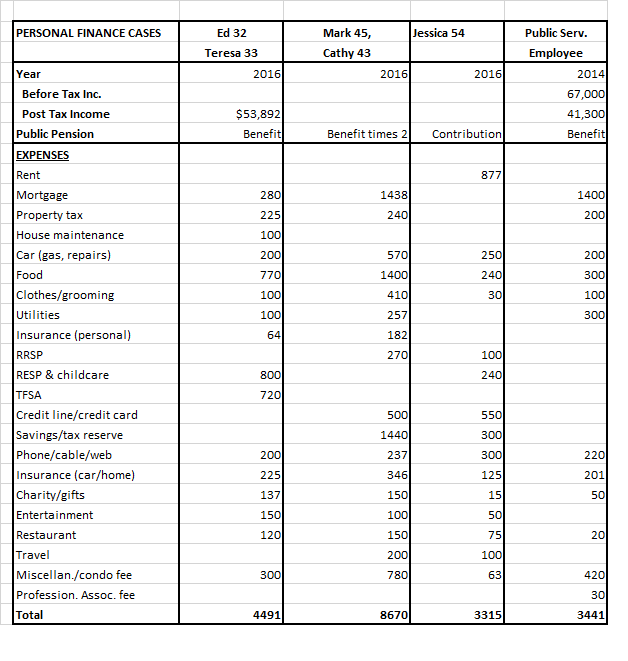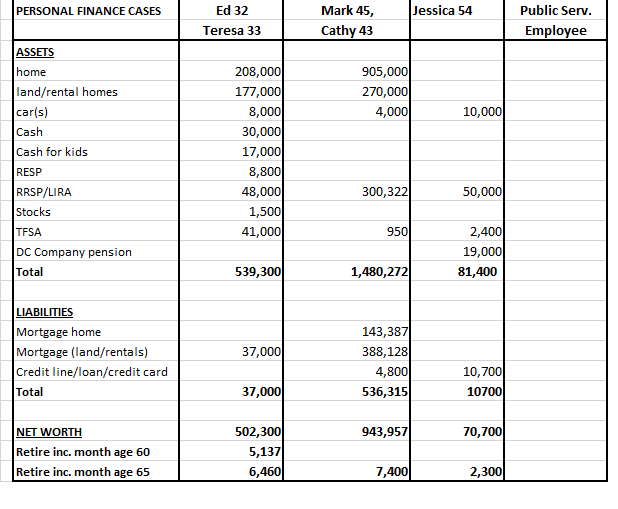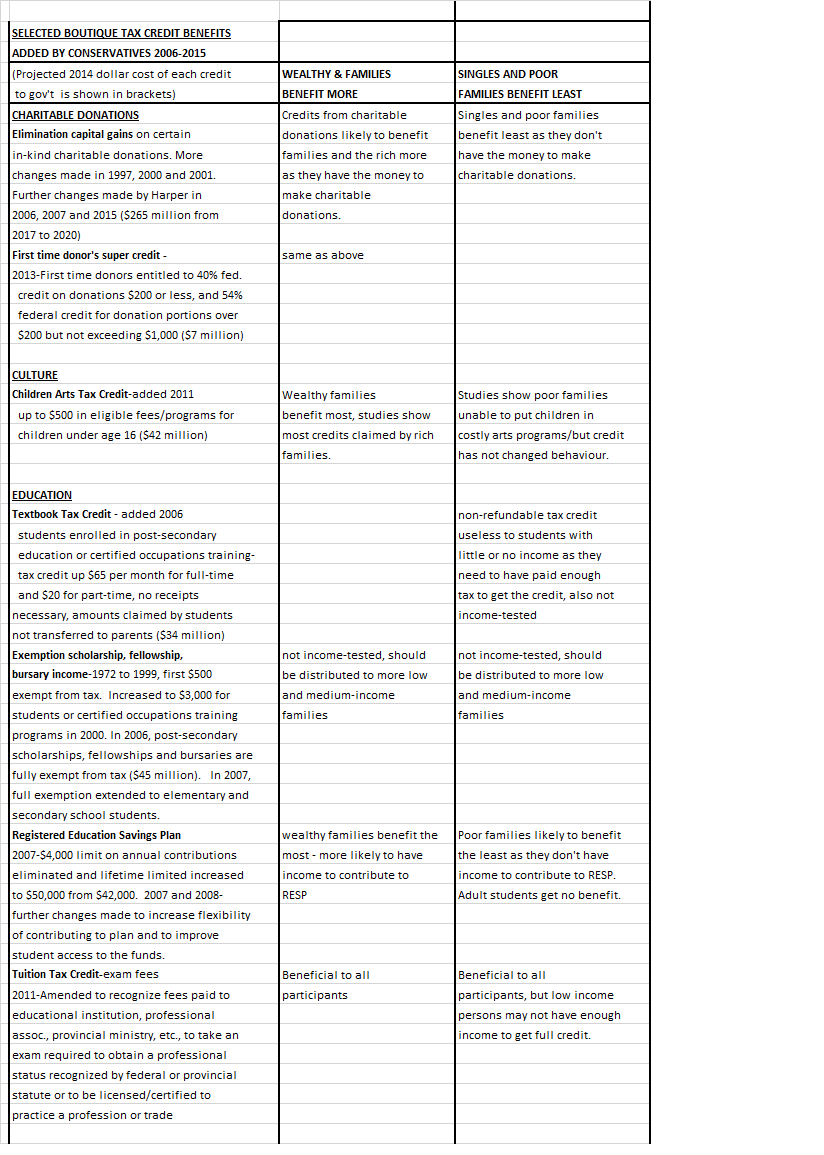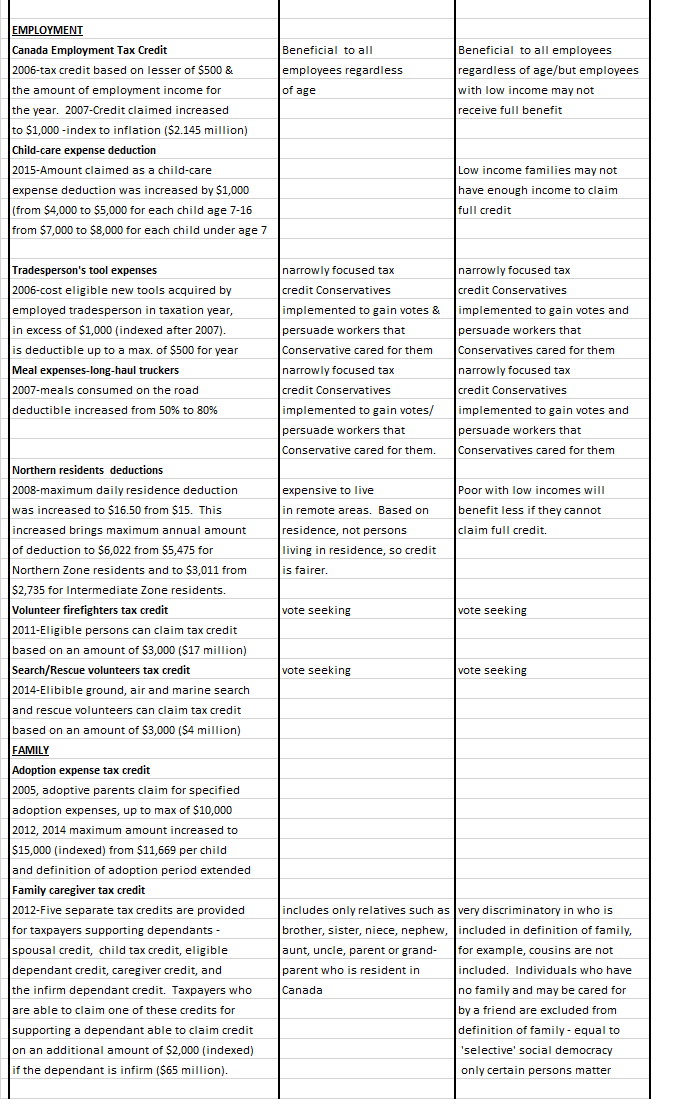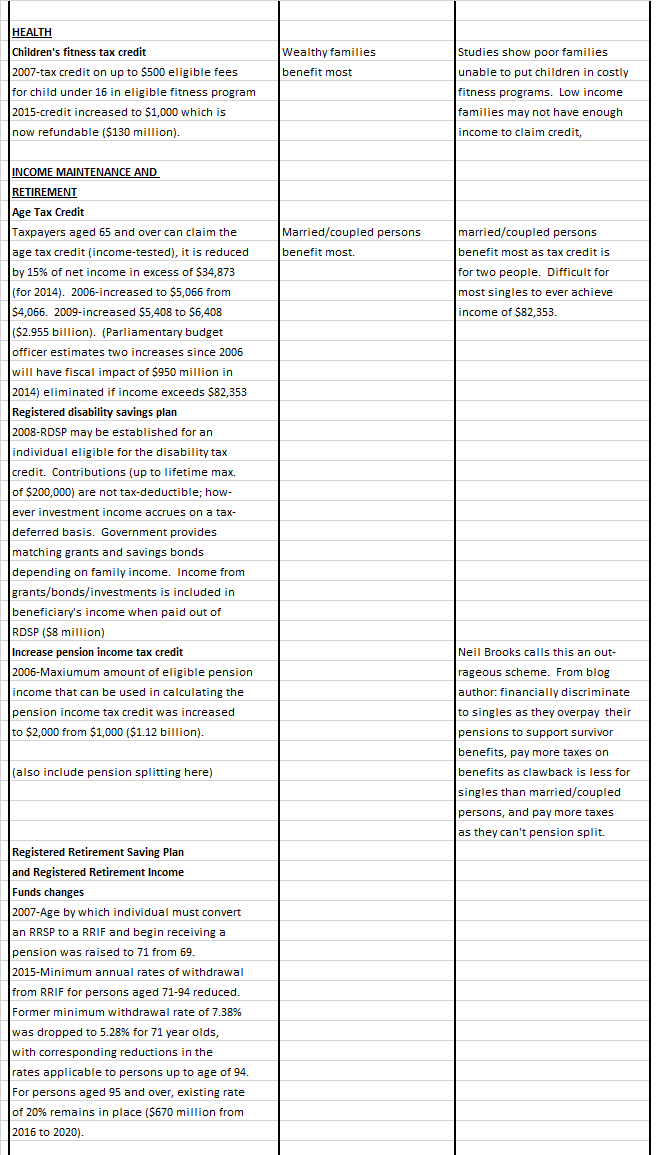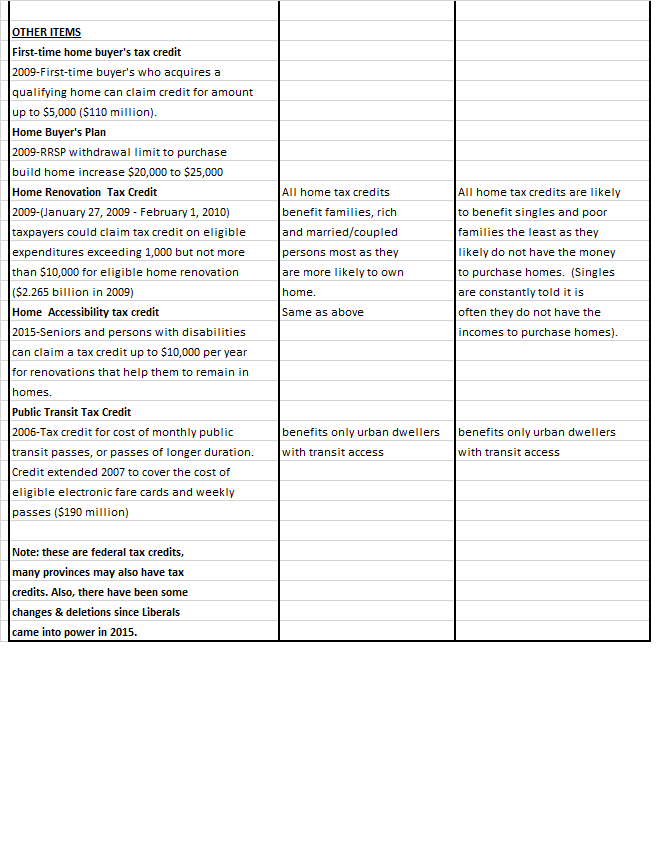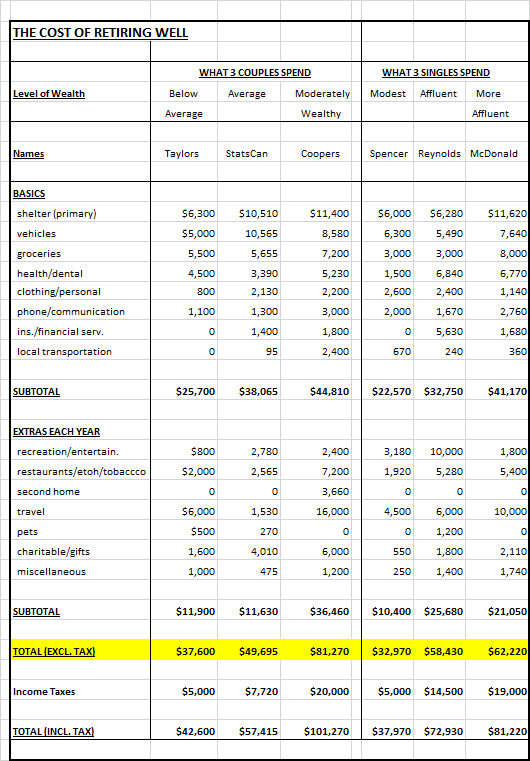FINANCIAL POST PERSONAL AND FAMILY FINANCIAL PROFILES STAR RATINGS-Part 1 of 2
(These thoughts are purely the blunt, no nonsense personal opinions of the author and are not intended to provide personal or financial advice).
six-reasons-why-married-coupled-persons-are-able-to-achieve-more-financial-power-wealth than singles.
(Andrew Allentuck from the Financial Post oversees the personal and family finance profile evaluations. Anyone can submit their financial profile to the Financial Post for analysis by a financial planner. Some of these cases have been used in this blog as in last post. It is helpful to know the background behind these financial analyses).
Star ranking system as stated by Allentuck is as follows (top rating is five stars):
Financial Post, December 21, 2013 “HOW MANY STARS DOES YOUR RETIREMENT DESERVE?” (financialpost)
*One star means the potential retiree is in a troublesome place. Few people who write to Family Finance are in the level at which there is no way to sustain a way of life without such major transformations as selling a home to raise cash, working to age 68, 70, or even 72 or telling children for whom money has not been set aside for post secondary education that they will have to finance it on their own.
In this category are people with business failures from which they have not recovered, low paying jobs, and modest savings. Some one star cases involve what may be called “elective poverty”. The result is that the individual will have no hope of maintaining the present, rather modest standard of living.
Blog Author’s comment: That ‘few people who write to Family Finance are in this level’ explains why there are so few singles without children in these profiles. Many singles and the poor fall into this category. They are often told they cannot afford to buy a house and put money into savings. They can only do one or the other, not both at the same time. Singles are often told they have to work longer than married or coupled person families to achieve a decent retirement lifestyle. Many families with children seem to make bad financial choices like putting their boys into hockey or going on yearly family vacations instead of, for example, maxing out RESP contributions to get the government grant.
**Two stars means that present savings and pensions will be insufficient to maintain a desired way of life, but that with time, perhaps restructuring of debt to eliminate loans with double digit interest rates, perhaps sale of a cottage and downsizing to one car, a retirement plan will be reworkable. Some Family Finance cases get two stars as a result of divorce splitting assets that would have been adequate for two people sharing expenses but that are inadequate when savings have to support two homes and when, as a result of loss of spouse, pension splitting is no longer possible.
Blog Author’s comment: For singles and the poor the sale of a cottage is out of the question because they have no cottage to sell. Straight from a financial person’s mouth – some profiles ‘get two stars as a result of divorce splitting assets that would have been adequate for two people sharing expenses but that are inadequate’ to support an individual and pension splitting is no longer possible. This blog has stated over and over again that married/coupled family units require less money to live and pension splitting is financially discriminatory to singles and poor. Singles are not able to pension split and poor families receive less value from pension splitting than wealthy married or coupled persons. Many singles and poor families get two stars simply because they are financially discriminated against by not receiving equal benefits to wealthy married or coupled family units.
***Three stars means that a person or couple is on track for retirement as planned. Debts may have to be reduced or a job stretched for a few more years, but time will be an ally. A modest rate of return on conservatively invested assets and continuing or perhaps increased savings rate will achieve sufficient capital to produce investment income, perhaps bolstered by expected benefits from government and private pension plans. At this level, it may be necessary to trim expenses to raise the rate of savings, but the machinery for a satisfactory retirement is in place. It may be useful to suspend savings to pay down debt, then, when money is no longer draining to pay interest, to restore savings and add what has been spent on debt service to retirement savings. This financial engineering works on a solid foundation for asset growth. Most Family Finance cases get this average but satisfactory rating.
****Four stars means a retirement plan is well conceived and that restructuring of savings or assets or lowering of expectations will not be needed. There may be a need to reduce the costs of generating income, for example, by shifting from mutual funds with high fees to exchange trade funds with low fees. This level is an adjustment process, not a restructuring of personal finances. Many people with defined benefit pensions get four stars. Their pensions are managed by experts, the management fees they pay are low and payments are guaranteed no matter what happens, for investment risk is borne by managers, not beneficiaries.
Blog Author’s comment: Regarding statement ‘many people with defined benefit pensions get four stars’, benefits received from defined benefit pensions depend on how many years employee has contributed to the pension plan. A few years of contributions will yield a very small pension. Also, married or coupled person family units fail to realize that singles get less from defined benefit pensions because they have to pay more taxes on their pensions and cannot pension split. Defined benefit pensions are inherently financially discriminatory to singles because survivors of the spouses get survivor benefits, but survivors have not contributed to the plan. When spouse of plan deceases then whatever is remaining should be willed to the surviving spouse, just as single’s remaining benefits are willed to his or her estate. Surviving spouse should treated equally to a single, after all, they are now ‘single’.
*****Five stars means that the person or couple will have sufficient income for living as planned. If nothing changes, the plan will work and sustain income at the required level. The five star evaluation is, in a sense, a level at which people with average jobs will not have suffered such crises as asset division in divorce, major investment loss or ill health forcing premature retirement. Structurally, at the five star level, retirement income source are diversified with substantial pensions and a clutch of investments to provide discretionary income. Most people with five stars have defined benefit pension plans and almost all have two breadwinners.
Blog Author comment: It seems most profiles presented in the Financial Post do not achieve five star status even with a million dollars or more in assets. Again from financial person’s mouth, in regards to two breadwinners, it is almost inherently impossible to a singles to achieve same financial retirement wealth as married/coupled persons unless they ‘work themselves to death’ with addition of part time or full time job in addition to regular job. Many single parents are forced to work more than one job to make financial ends meet.
Allentuck provides the following methodology for rating retirement readiness:
-
Savings rate: if savings are 10% or more of disposable income, score 1 point, if 20%, 2 points, if 30% 3 points, etc. If less than 10% of disposable income, then no stars.
-
If job has a defined benefit pension, add 3 points. If indexed plan, add 1 more point.
-
If there are no significant debts other than credit card charges paid each month, add 2 points. If debt service costs are 20% or more of take home income, take off 1 point, if 20% of take home income, take of 2 points, etc.
-
If spouse can split eligible pension income, add 1 point. If no spouse to split, take off 1 point.
-
If you have ten or more years to retirement add 2 points. If less than 10 years, add 1 point. If retired, 0 points.
-
If total investments both registered and non-registered less debts equal 20 or more times estimated annual pre-tax retirement income, add 5 points. If 15 times estimated retirement income, add 4 points. If 10 times, add 3 points. If less than ten times estimated retirement income to two times retirement income, there are no points. If negative net worth, deduct 5 points.
-
If total after tax retirement income is 120% of estimated retirement expenses, add 2 points, if 100% of retirement income, add 1 point. If 90% of retirement income, take off 1 point for each 10% it is less than estimated retirement expenses.
-
TOTAL: If you have 10 points or more, you would probably get 5 stars.
Blog Author’s comment: The five star rating and point system is interesting and does provide value in determining retirement readiness. It also shows some of financial discriminatory aspects that governments perpetuate against singles and poor families. The system also continues to hide salient details as to why singles and the poor face financial discrimination and are unable to attain same financial power and wealth as married or coupled family units.
Savings rate: Only the wealthy will receive top points because they have the most disposable income. Defined pension benefits: Benefits received depends on how many years of contribution there were and, as stated above, pension plans are inherently financially discriminatory to singles and the poor. Three points will have more value to a married or coupled family unit than they will to singles because of this discrimination. Pension splitting: Straight from financial person’s mouth, pension splitting is financially beneficial to married or coupled family units. Singles will never get this point and, in fact, will lose one point because there is no spouse to split pension income with. Total Investments: The wealthy and married or coupled family units generally will have been able to accumulate more investments than singles and the poor; therefore, they will get more points in this rating system. Total after-tax retirement income: It is interesting to note many of the married or coupled family units profiled in the Financial Post cases will have even more retirement income with less expenses than while earning income and raising children. This is because they are able to accumulate more wealth and have received many government benefits, so they will receive more points.
It is ironic that singles most likely are inherently excluded from receiving a total of five stars because they receive less value from their defined benefits pensions and can never get the one point for pension income splitting and actually have to take off one point. As stated those most likely to receive five stars have two breadwinners as opposed to one.
Financial Post, December 26, 2012 “THE MAKING OF FAMILY FINANCE” (financialpost)
QUOTE: ‘The question is a common thread in our email messages and Web comments: Why don’t you look for real problems of lower-income people who really need free financial advice? For the record, the after-tax income of about 50% of those who ask for our help is in the range of $58,000 to $65,000 for families with two parents working and $45,000 to $55,000 for single people seeking our help. About 30% have incomes between $100,000 and $200,000 a year.
We hear from a few people, about 5% of inquiries, with incomes over $200,000. And 15% have incomes below $35,000 a year. So the vast majority of the 40 inquiries or so we receive every week fall between $58,500 and $200,000 a year.
We take on few cases of folks with incomes over $200,000 since, at that level, people can afford accountant and portfolio managers.
Those on the lower end of the scale also often fall off before reaching the final stages of our analysis because for many there is just no constructive advice on debt management and investment solutions to be offered. When money is so tight, there is little room for creativity and finessing financial plans.’
(This blog is of a general nature about financial discrimination of individuals/singles. It is not intended to provide personal or financial advice).

